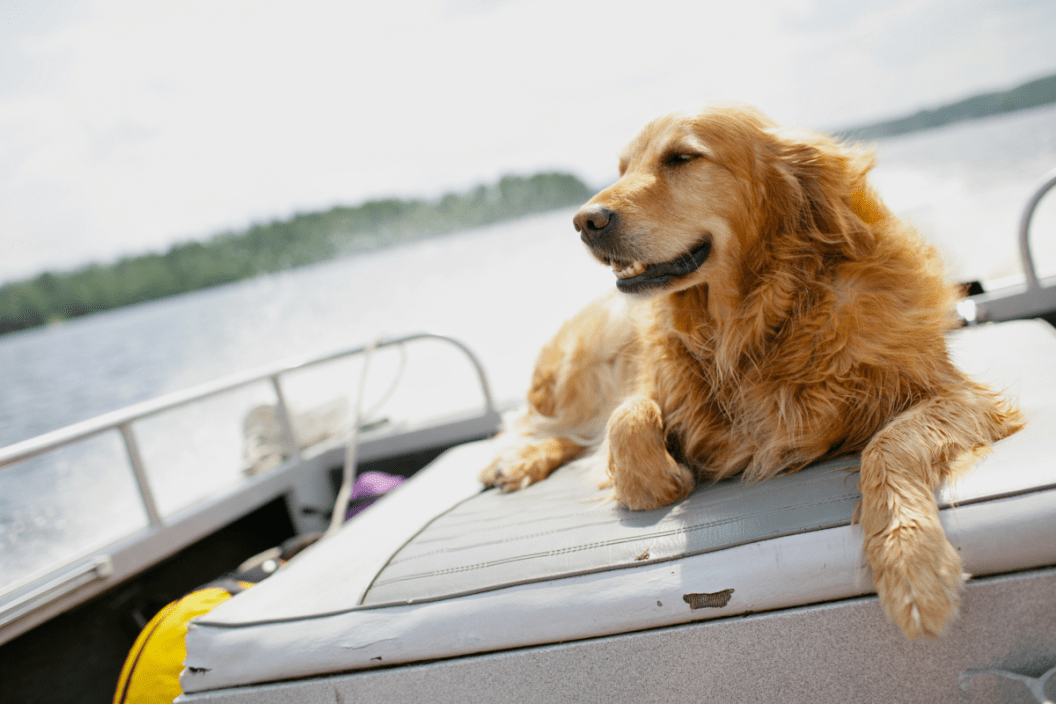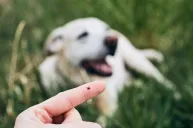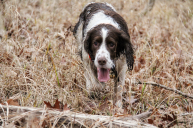No matter what time of year it is, we always want to keep our pets happy and safe. But sometimes, even if you're practicing your due diligence, you may not be aware of a safety concern that could harm your pup. Understanding the most important dog summer safety tips will keep your four-legged friends healthy and happy.
While unsafe situations can pop up all the time, there's one season that's ripe with potential dangers: summer. With your dog spending more time outside, having additional people over for gatherings with your dog around, and traveling with your pup (whether it's a short journey or a full-on road trip), the chances for your dog to be unsafe, unfortunately, increase.
This is something that Dr. Antje Joslin, veterinarian for Dogtopia, witnesses first-hand.
"People and their dogs spend more time out and about in the summer, exposing them to a wider array of situations that may put them at a greater risk for injury," she tells WideOpenPets.com. "There is more exposure to insects, snakes, and wildlife, as well as more outdoor activities such as swimming, boating, and picnics just to name a few."
If you want to be sure that you're keeping your dog safe and secure this summer, follow these dog summer safety tips from Dr. Joslin.
1. Test Hot Pavement
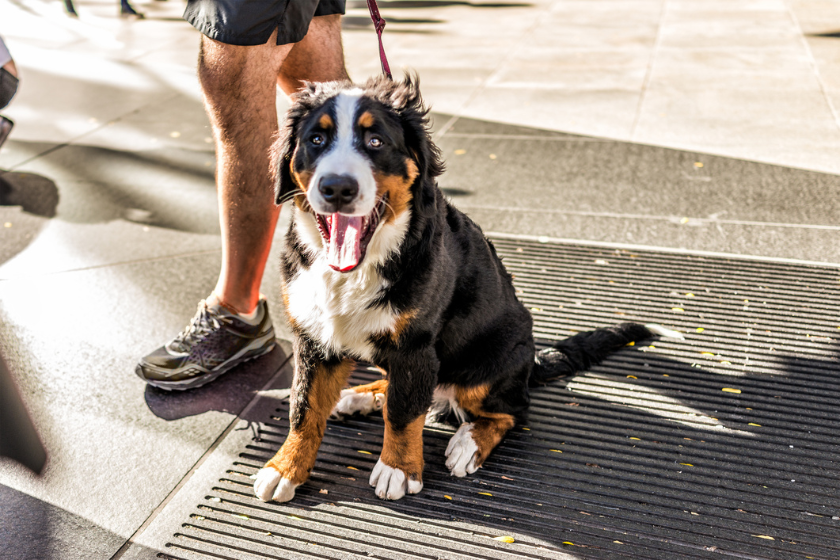
When the temperatures rise, so can the temperature of the pavement—and this can be bad news for your dog's sensitive paw pads. Joslin says that a very simple rule about pavement is that if it's too hot for your bare feet, it's too hot for the dogs. "Take your shoes and socks off and walk on the pavement for a few minutes. If it's burning your feet, play it safe and keep your dog off or put booties on their paws," she advises. Another alternative is to hold the back of your hand to the pavement for 10 seconds. If this is uncomfortable for you, it'll be uncomfortable for your pup.
2. Detect Signs of Overheating
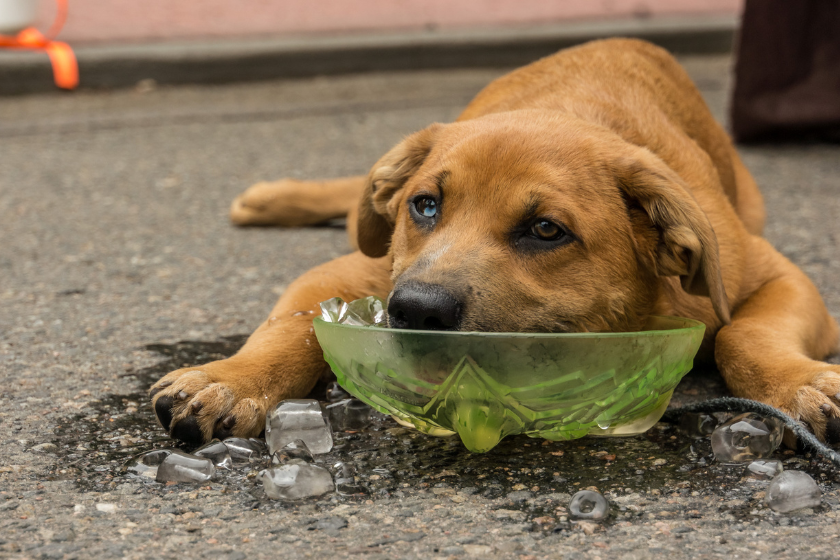
Hot summer days can result in dogs getting overheated and experiencing heatstroke. Dogs don't have the ability to sweat, so they feel heatwaves a lot more than we do, and their bodies are more sensitive to it. Joslin says to look for excessive panting, heavy, fast breathing, excessive drooling, dry or sticky gums, bright red or discolored gums, a high heart rate, feeling hot to the touch, weakness, loss of bodily control, and seizures. If any of these symptoms occur, take your dog to the vet immediately.
3. Practice Safe Swimming
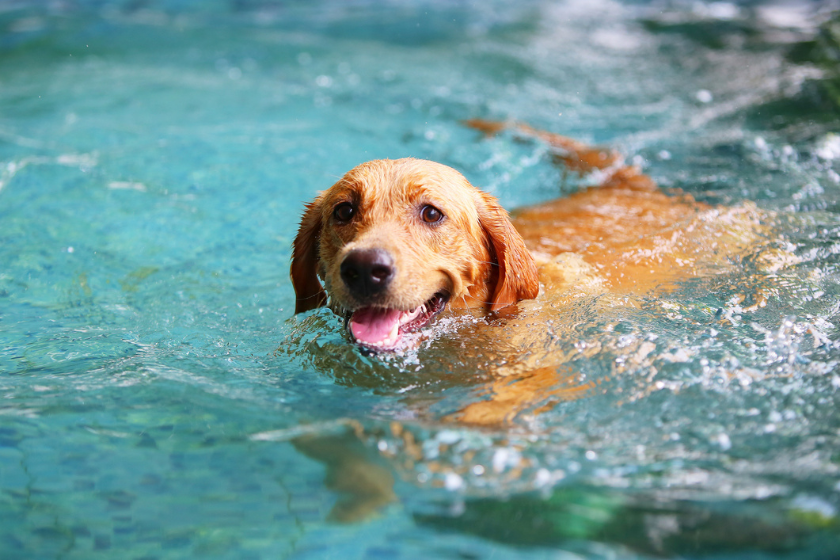
If your dog is swimming in a pool, never leave them unsupervised. "Teach your dog how to exit the pool via the stairs, so that if they fall in they know how to get out on their own," Joslin says.
If your pup prefers taking a dip in a lake or river, again, never leave them unsupervised. "Even if your dog is very comfortable around water, there are sometimes unknown hazards that can lead to drowning," Joslin notes. Another hazard to be aware of? Algae blooms in lakes, which can be toxic to pets. "Always check the water before allowing your dog in and around bodies of water in the summer months," she says.
4. Provide Sun Protection

Humans need sunscreen when going out into that summer sun, and so does your dog—even if they have a thick coat of fur. The sun's rays can still penetrate down to your dog's skin, making sunburn a real thing, so it's wise to practice good sun safety.
"There are sunscreen products available for dogs," Joslin shares. "You may want to consider using either sunscreen or sun-protective clothing for your dog depending on the type of hair coat or pigment, where you live, and the amount of sun exposure your dog gets. Be sure to use products meant for dogs that do not contain zinc."
5. Make Boating Safe

Boating can be a tricky thing for dogs, especially if they're prone to jumping in the water randomly. It's completely possible that your pup could jump off the boat while it's in motion. With this in mind, Joslin recommends always keeping a life vest on your dog, whether you're in a power boat, sailboat, canoe, or kayak.
"Also, ensure that you keep your dog in a part of the boat with non-slip surfaces," Joslin suggests. "Many parts of the boats have slippery surfaces that can cause your dog to slip during sharp turns and even fall overboard. Make sure your dog has shade on board and access to fresh drinking water. Dogs can easily overheat or get sunburned onboard."
6. Respond Quickly to Bee Stings
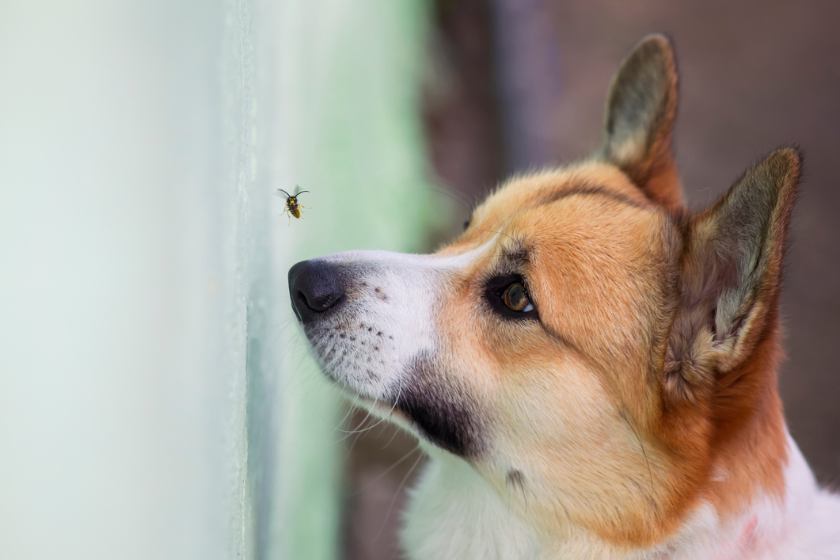
A bee sting is unpleasant for anyone, but it can cause a wide variety of reactions in dogs, according to Joslin.
"Some dogs experience brief pain associated with a bee sting, and some have a full anaphylactic reaction that can end in a life-threatening emergency if not immediately treated," she says. It's a good idea to keep diphenhydramine (an antihistamine for allergies) on hand in case your dog is stung. You can ask your veterinarian for a dose for your dog's weight in case of allergic reactions. Know the location of the nearest emergency clinic if you notice facial swelling, hives, difficulty breathing, vomiting, or diarrhea following a bee sting.
7. Be Wary of Ticks and Mosquitoes
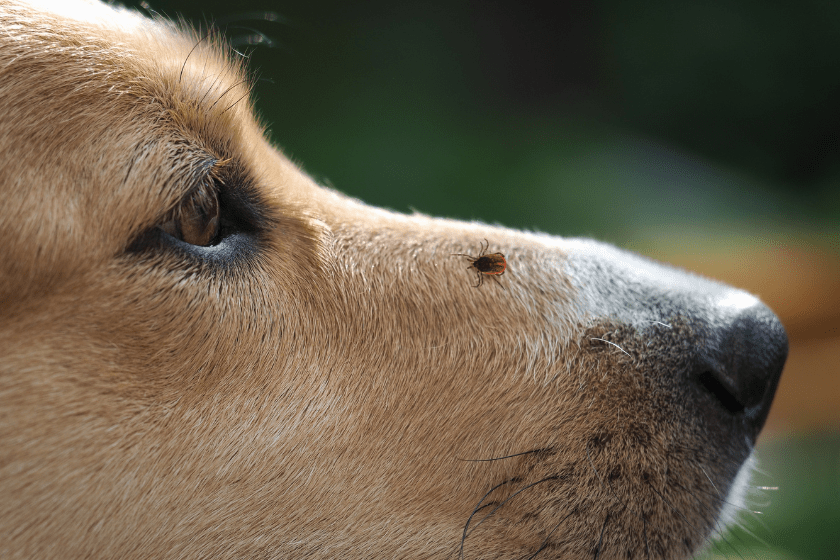
While summer certainly has its charms, mosquitoes and ticks aren't included in that list. "Ticks carry many diseases that can make your dog sick including Lyme disease, tick fever, Rocky Mountain spotted fever, and anaplasma," Joslin says. "Use oral flea and tick products to prevent tick infestation and the transmission of tick-borne diseases."
As for mosquitoes, Joslin says that they "aren't just an itchy nuisance." For dogs, they can transmit heartworm disease. "Keep your dog on year-round heartworm prevention to protect against heartworm disease," Joslin recommends. "Don't use bug repellent meant for humans on your dog. Treat your yard for mosquitoes, remove standing water sources, and avoid being outside at dawn and dusk."
8. Look for Frequent Grass-Eating

Does your dog have a penchant for noshing on grass during the summer months? While eating small amounts of grass occasionally isn't harmful to your dog, as Joslin says, you'll want to avoid having them ingest grass that's been sprayed with chemicals or has other plants and weeds in it.
"For many dogs, eating grass can be normal behavior and they will not experience any ill effects," Joslin says. "If you see your dog eating grass frequently, make sure they are on a monthly dewormer that treats for round and hookworms—most monthly oral heartworm medications will deworm against round and hookworms. If your dog is vomiting frequently when eating grass, make an appointment to see your veterinarian."
9. Avoid Poisonous Plants

Be wary of plants poisonous to dogs, especially in the summer months.
"Don't allow your pet to eat plants or vegetation, besides the previously-discussed grass, outside. If you find your pet eating plants, take a picture of all parts of the plant so you or a professional can identify it and determine the appropriate course of action if it is poisonous," Joslin says.
10. Be Careful During Barbecues
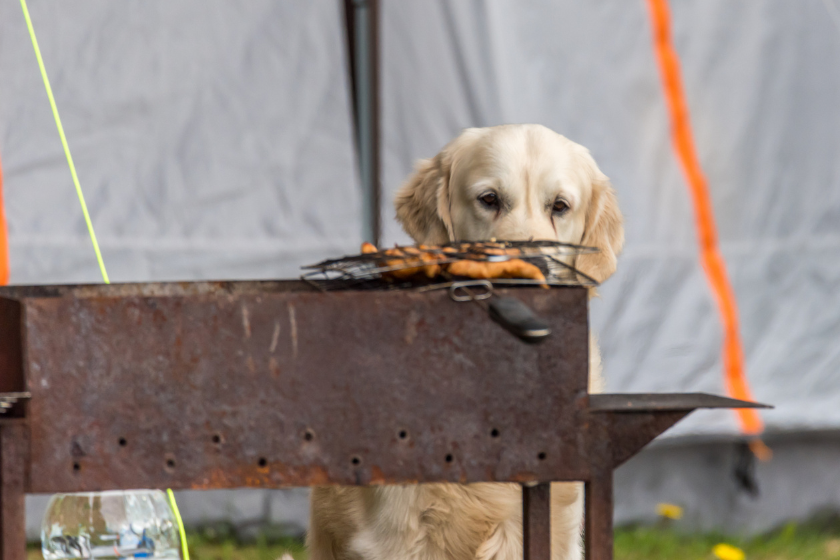
Even though barbecues can be a blast for humans, dogs might not have such a great time.
Calling barbecues "dangerous" for dogs, Joslin says that if a dog jumps onto a grill, they may be burned if it's been left on or is still hot. "Dogs sometimes jump up with their front feet and suffer serious foot and face burns," she adds. Then there are all those goodies available to eat at a barbecue, which taste good to us but can be highly detrimental to dogs.
"Fat and other drippings can accumulate below the grill and are very enticing to dogs to eat, which can sometimes lead to gastrointestinal upset," Joslin says. "Oftentimes, things that we grill are not safe for dogs because they are heavily-spiced, very fatty, and contain bones or other hazards if they are consumed."
Joslin shares that she once had a dog present at a barbecue who swallowed a large piece of a wire grill brush and had to have surgery to remove it. "I'm sure it was covered in yummy barbecue smells and tastes, but was very unsafe for the dog," she says.
11. Avoid Hot Cars
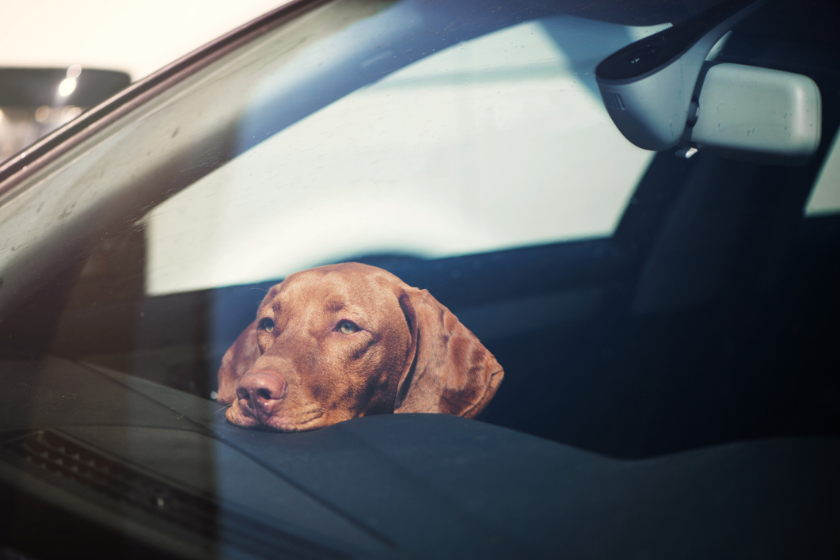
For dog lovers out there, you likely know all too well that dogs should never be left in cars on hot days. But just as a reminder, remember that even on a seemingly "cool" 70-degree day the temperature in the car can still reach a dangerous 100 degrees in a short time, as Joslin points out.
"Leaving the windows cracked does not prevent your car from getting hot," Dr. Joslin says. "Never leave your dog in a car unattended in warm or hot weather. Heatstroke and death can occur within a few minutes."
How do you keep your pup safe in the summer? Tell us on the Wide Open Pets Facebook page!
